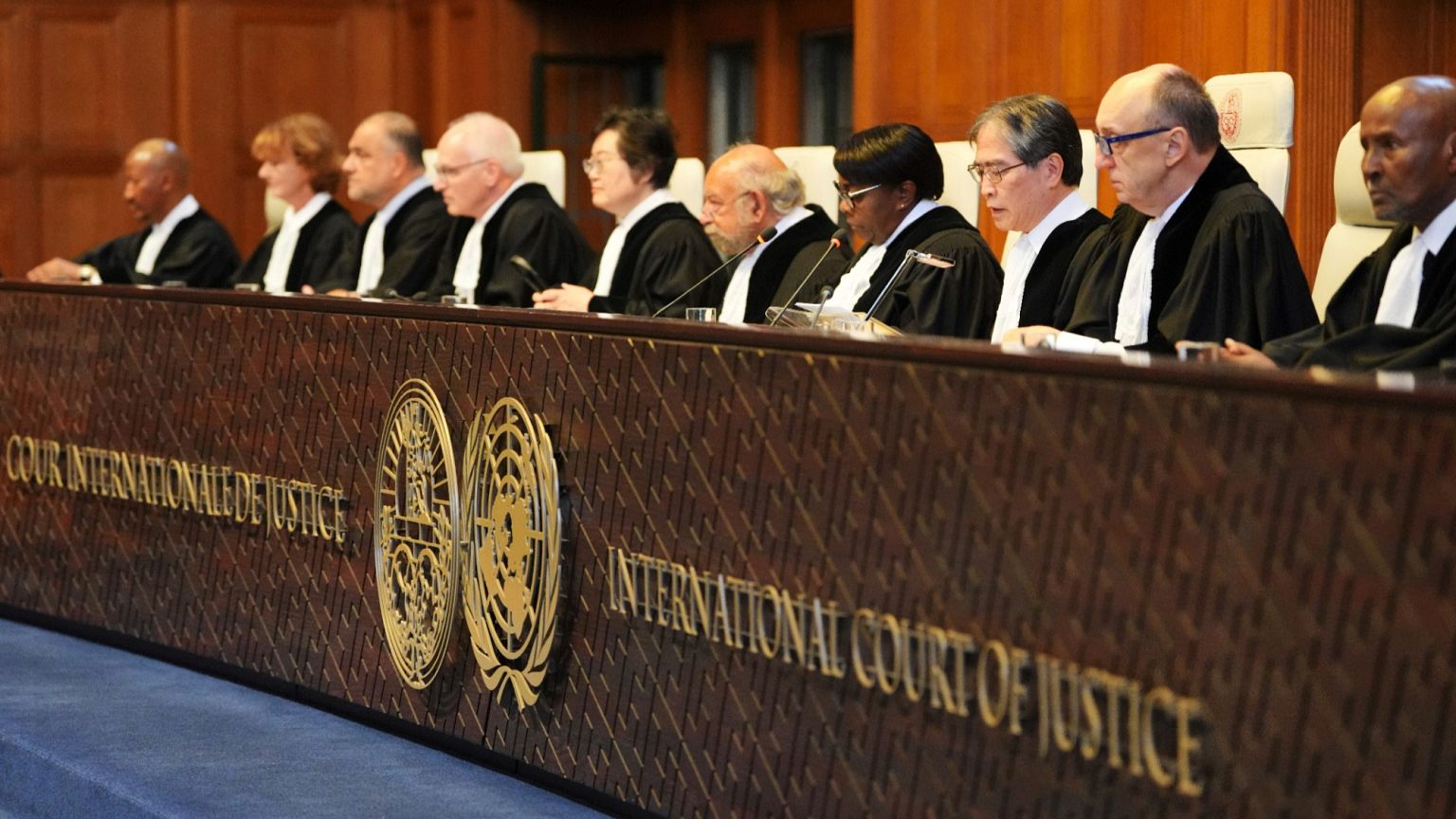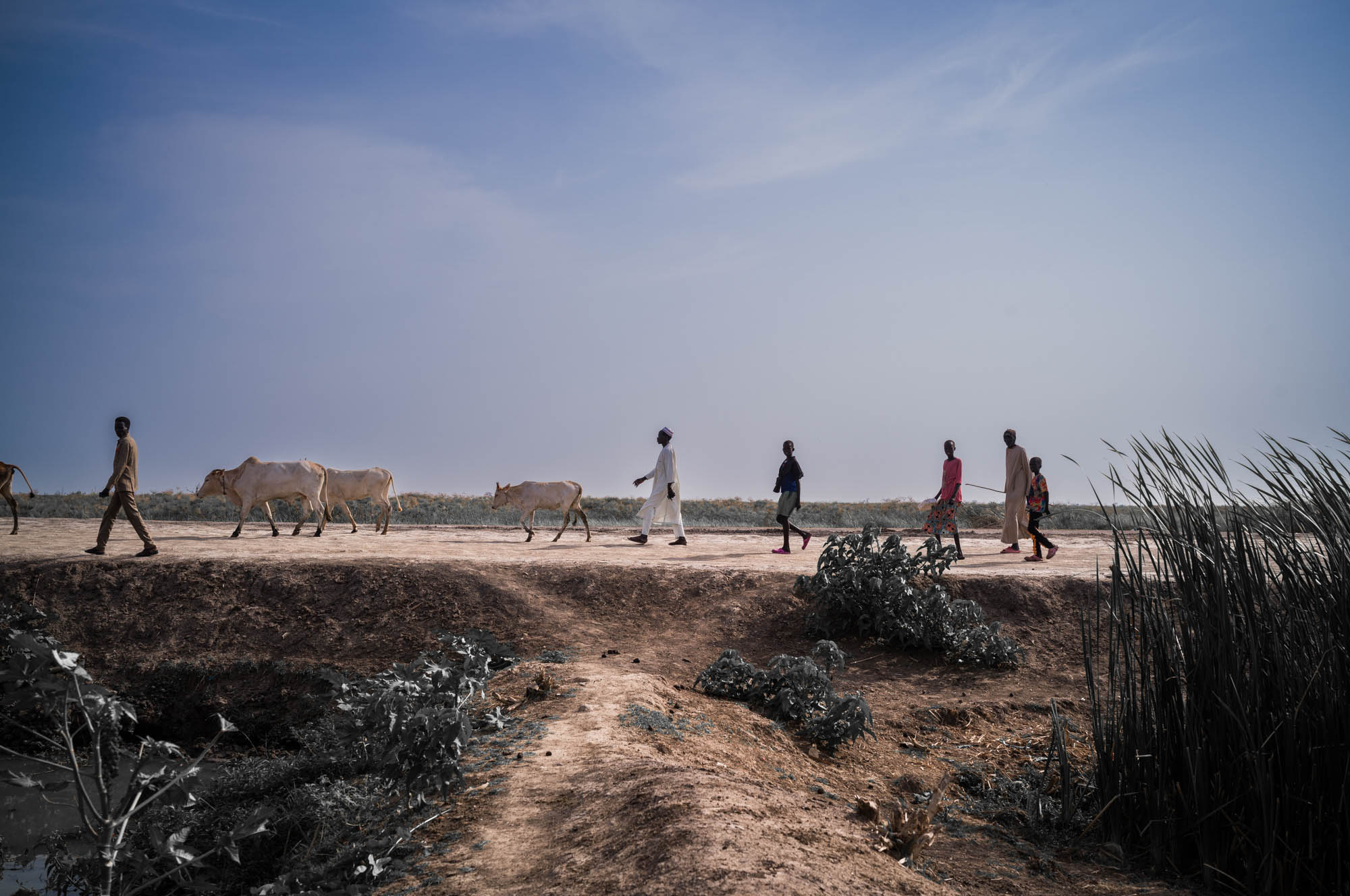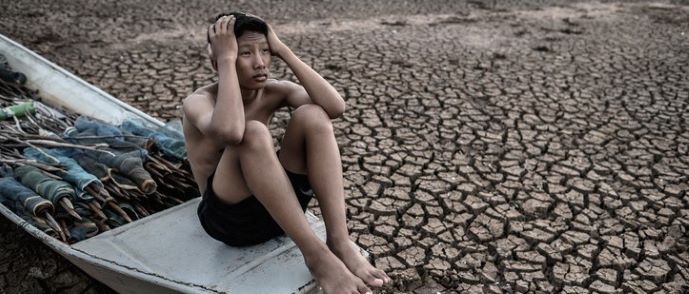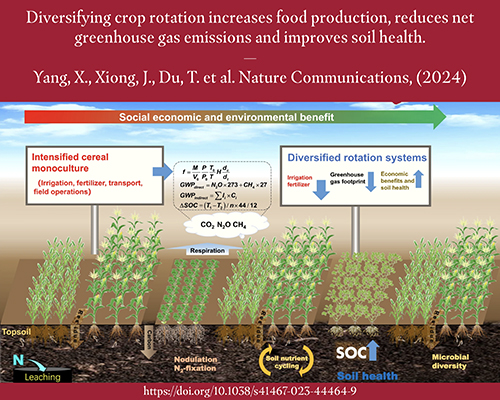Report on the International Court of Justice Advisory Opinion on Climate Finance
Executive Summary
A landmark advisory opinion by the International Court of Justice (ICJ) has established a direct legal link between the climate finance obligations of developed nations and the Paris Agreement’s goal of limiting global warming to 1.5°C. This ruling significantly strengthens the framework for achieving Sustainable Development Goal 13 (Climate Action) by creating potential legal accountability for insufficient financial contributions. The opinion provides a new basis for legal and diplomatic action, reinforcing SDG 17 (Partnerships for the Goals) by demanding that financial partnerships align with scientifically-backed climate targets. This report analyzes the key aspects of the ruling and its profound implications for international law, climate negotiations, and the broader 2030 Agenda for Sustainable Development.
The ICJ Ruling: A New Paradigm for Climate Accountability
Core Findings and Link to SDG 13 (Climate Action)
The ICJ’s advisory opinion, issued in response to a request from the United Nations General Assembly spearheaded by Vanuatu, clarifies that under the Paris Agreement, developed countries have a legal obligation to provide climate finance at a level sufficient to achieve the 1.5°C warming limit. This directly operationalizes the goals of SDG 13, which calls for urgent action to combat climate change and its impacts.
- The court stated that financial support must be provided “in a manner and at a level that allows for the achievement of” the Paris Agreement’s temperature goals.
- While no specific monetary value was set, the court indicated that the required level of finance should be evaluated based on the capacity of developed states and the needs of developing states.
- This establishes a legal foundation to hold governments “responsible” for failing to meet these financial obligations, moving beyond political commitments to legally enforceable duties.
Strengthening Justice and Institutions (SDG 16)
The ruling empowers legal action as a tool for climate justice, a core tenet of SDG 16 (Peace, Justice and Strong Institutions). It provides a basis for domestic and international courts to scrutinize the adequacy of climate finance plans.
- Domestic Litigation: In countries where international law is directly enforceable (e.g., France, Germany, the Netherlands), the opinion opens the door for lawsuits compelling governments to revise insufficient climate finance strategies. This mirrors successful litigation concerning domestic emissions reduction plans.
- International Adjudication: The ruling could facilitate state-versus-state lawsuits at the ICJ, although this is contingent on both parties recognizing the court’s compulsory jurisdiction.
- Accountability for All Nations: The court’s opinion suggests that even non-signatories to specific treaties, such as a post-exit United States, retain obligations under “customary international law” to cooperate on preventing climate change, making them potentially liable for inaction.
Implications for Global Partnerships and Inequality
Reassessing Financial Commitments under SDG 17 (Partnerships for the Goals)
The opinion provides significant leverage for developing nations in diplomatic negotiations, particularly at upcoming COP summits. It reframes the climate finance debate around legal necessity rather than voluntary contribution, directly supporting the targets of SDG 17, which calls for mobilizing financial resources to assist developing countries.
- The ruling gives credence to calls from developing countries for substantially higher financial commitments, such as the $1.3 trillion annual figure proposed at COP29, to fund the transition to clean energy (SDG 7) and protect vital ecosystems.
- Vanuatu has announced its intention to use the opinion as a “climate-diplomacy toolbox” to urge partners to align financial flows with the court’s guidance.
Addressing Inequalities and Differentiated Responsibilities (SDG 10)
The ICJ addressed the contentious issue of which countries are obligated to provide finance. This has direct implications for SDG 10 (Reduced Inequalities) by ensuring that responsibility is aligned with current economic capacity.
- The court noted that the distinction between “developed” and “developing” nations is “not static” and depends on an assessment of a state’s “current circumstances.”
- This suggests that high-income developing countries may also be expected to contribute to climate finance, reflecting a more dynamic interpretation of the principle of “common but differentiated responsibilities and respective capabilities.”
- This clarification could help resolve longstanding deadlocks in climate negotiations and ensure that financial burdens are distributed more equitably based on capacity, not on outdated 1992 classifications.
Conclusion and Forward Outlook
The ICJ’s advisory opinion represents a pivotal moment in the global effort to address climate change. By legally connecting financial obligations to the 1.5°C target, the court has created a powerful instrument for accountability that advances multiple Sustainable Development Goals. The ruling is expected to catalyze a new wave of climate action through legal, diplomatic, and political channels, ultimately strengthening the global partnership required to build a sustainable and resilient future for all.
SDGs Addressed in the Article
- SDG 13: Climate Action – Take urgent action to combat climate change and its impacts.
- SDG 17: Partnerships for the Goals – Strengthen the means of implementation and revitalize the Global Partnership for Sustainable Development.
- SDG 16: Peace, Justice and Strong Institutions – Promote peaceful and inclusive societies for sustainable development, provide access to justice for all and build effective, accountable and inclusive institutions at all levels.
Identified SDG Targets
SDG 13: Climate Action
-
Target 13.a: Implement the commitment undertaken by developed-country parties to the United Nations Framework Convention on Climate Change to a goal of mobilizing jointly $100 billion annually by 2020 from all sources to address the needs of developing countries in the context of meaningful mitigation actions and transparency on implementation and fully operationalize the Green Climate Fund through its capitalization as soon as possible.
- Explanation: The article’s central theme is the legal obligation of developed countries to provide sufficient climate finance to developing nations. It explicitly discusses the failure to meet financial needs, referencing the Paris Agreement’s finance obligations and a push by developing countries for “$1.3 trillion a year” to help them “curb emissions,” “reduce fossil fuels, adopt clean energy and protect forests.”
-
Target 13.2: Integrate climate change measures into national policies, strategies and planning.
- Explanation: The article mentions that domestic courts have ordered governments like the UK, Germany, and the Netherlands to revise “inadequate plans to reduce greenhouse gas emissions.” The potential for new lawsuits aims to compel governments to create and implement “sufficient climate finance plans,” directly linking to the integration of climate measures into national policy and planning.
-
Target 13.b: Promote mechanisms for raising capacity for effective climate change-related planning and management in least developed countries and small island developing States, including focusing on women, youth and local and marginalized communities.
- Explanation: The initiative for the ICJ advisory opinion was led by “the Pacific island nation of Vanuatu,” a small island developing state. The entire legal and diplomatic effort described is a mechanism to enhance capacity and secure resources for nations most vulnerable to climate change.
SDG 17: Partnerships for the Goals
-
Target 17.3: Mobilize additional financial resources for developing countries from multiple sources.
- Explanation: The article is fundamentally about mobilizing public financial resources from developed countries for developing countries. The ICJ ruling states that developed countries “must provide financial support to help developing nations,” and the article discusses the scale of this finance, such as the “$1.3 trillion a year” figure.
-
Target 17.14: Enhance policy coherence for sustainable development.
- Explanation: The article highlights a lack of policy coherence where developed countries’ climate finance commitments under international agreements (like the Paris Agreement) are not matched by their actual budgetary actions. The legal cases mentioned are attempts to enforce this coherence, ensuring national plans align with international obligations.
SDG 16: Peace, Justice and Strong Institutions
-
Target 16.3: Promote the rule of law at the national and international levels and ensure equal access to justice for all.
- Explanation: The article details how the International Court of Justice (ICJ) and domestic courts are being used as mechanisms to enforce international law (the Paris Agreement). It describes how the ICJ opinion “opens the door to lawsuits” and how nations can sue other nations, which are clear examples of promoting the rule of law and seeking justice for climate inaction.
-
Target 16.6: Develop effective, accountable and transparent institutions at all levels.
- Explanation: The legal actions discussed are aimed at holding governments (“institutions”) accountable. The article notes that if governments fail to provide sufficient finance, “they should be held ‘responsible’.” The lawsuits question how governments determine their “fair share of climate finance” and seek to make them revise insufficient plans, thereby pushing for more accountable and transparent governance.
-
Target 16.8: Broaden and strengthen the participation of developing countries in the institutions of global governance.
- Explanation: The article shows a developing country, Vanuatu, successfully using an institution of global governance (the UN General Assembly) to request an advisory opinion from the ICJ. This action demonstrates and strengthens the role and influence of developing nations in shaping international law and holding more powerful states accountable.
Implied Indicators for Measuring Progress
Indicators for SDG 13 Targets
-
Indicator for Target 13.a: Total amount of public climate finance provided by developed countries to developing countries.
- Explanation: The article provides a specific monetary figure: “$1.3 trillion a year in government money that developing countries pushed for.” This figure serves as a benchmark or indicator of the level of finance considered necessary, against which actual contributions can be measured. This relates to the official indicator 13.a.1 (Amounts provided and mobilized in United States dollars per year).
-
Indicator for Target 13.2: Number of national climate finance and emission reduction plans judged to be sufficient by judicial bodies.
- Explanation: The article mentions that courts have ordered governments to “revise what were judged to be inadequate plans.” The outcome of such court cases—whether a government’s plan is deemed adequate or not—can serve as a qualitative indicator of progress in integrating effective climate measures into national policy.
Indicators for SDG 17 Targets
-
Indicator for Target 17.3: Volume of public finance flows from developed to developing countries for climate action.
- Explanation: The core issue is the level of “public climate finance.” The article discusses the need for this finance to be “compatible with keeping global warming to 1.5C.” The amount of money transferred for this purpose is the primary indicator, with the article suggesting figures far exceeding current commitments.
Indicators for SDG 16 Targets
-
Indicator for Target 16.3: Number of legal cases brought before national and international courts concerning climate commitments.
- Explanation: The article explicitly states that the ICJ opinion “opens the door to lawsuits” and that climate campaign groups are “looking at the judgment very carefully to see how we can use it to strengthen our current and future climate casework.” The number of such lawsuits filed would be a direct indicator of the use of legal systems to enforce climate obligations.
-
Indicator for Target 16.8: Number of resolutions or legal actions initiated by developing countries within international bodies like the UN and ICJ.
- Explanation: The article highlights that the “government of the Pacific island nation of Vanuatu was the major force” behind the ICJ request. Vanuatu’s plan to “submit a resolution to the UN General Assembly” is another example. Tracking such initiatives serves as an indicator of the active participation of developing countries in global governance.
Summary of SDGs, Targets, and Indicators
| SDGs | Targets | Indicators Identified in the Article |
|---|---|---|
| SDG 13: Climate Action | 13.a: Mobilize financial resources for developing countries for climate action. | The amount of climate finance provided by developed countries, measured against the needed “$1.3 trillion a year.” |
| 13.2: Integrate climate change measures into national policies. | The number of government climate plans revised or created due to court orders finding them “inadequate.” | |
| 13.b: Promote mechanisms for capacity-building in LDCs and SIDS. | The use of international legal mechanisms (like the ICJ opinion) by Small Island Developing States (Vanuatu) to secure resources. | |
| SDG 17: Partnerships for the Goals | 17.3: Mobilize additional financial resources for developing countries. | The level of “public climate finance” flows from developed to developing nations to meet the 1.5°C goal. |
| 17.14: Enhance policy coherence for sustainable development. | The alignment of national budgets and finance plans with international commitments under the Paris Agreement, enforced through legal challenges. | |
| SDG 16: Peace, Justice and Strong Institutions | 16.3: Promote the rule of law and ensure equal access to justice. | The number of lawsuits brought against governments in national and international courts to enforce climate obligations. |
| 16.6: Develop effective, accountable, and transparent institutions. | The extent to which governments are held “responsible” and forced to revise climate plans through judicial oversight. | |
| 16.8: Broaden participation of developing countries in global governance. | The number of successful initiatives (e.g., UN resolutions, ICJ requests) led by developing countries like Vanuatu. |
Source: climatechangenews.com







